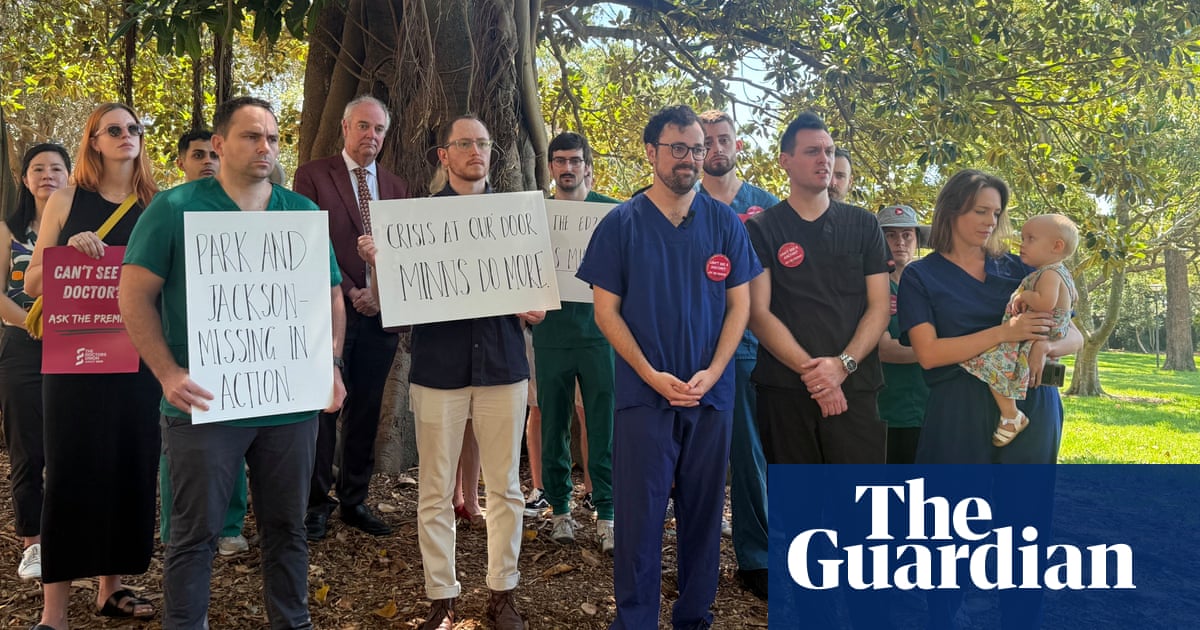Construction of a new mental health facility set to become the largest inNew South Walesbegan on Wednesday in western Sydney, but psychiatrists say it will be an “empty shell” until the issues within the state’s workforce are resolved.
The peak body for psychiatrists has said the $540m Westmead integrated mental health complex is likely to suffer the same fate as several recently opened facilities in western Sydney, which are only able to operate at less than half the available beds due to lack of staff.
Over a third of the permanent public sector psychiatrist positions were already vacant in the state before the remaining specialist doctors resigned en masse in a high-profile dispute with the state government whichremains in arbitration before the NSW Industrial Relations Commission.
The doctors union, the Australian Salaried Medical Officers’ Federation (Asmof), representing psychiatrists, is arguing for a special levy to increase pay by 25%. The union claims the boost will stem the flow of specialist doctors leaving the state’s public system, which is caught in a vicious cycle whereremaining staff are left to pick up the slack of the understaffed system, meaning more suffer moral injury and leave.
Rose Jackson, the NSW mental health minister, on Wednesday said the “state of the art” facility at Westmead would have 250 to 300 beds to be able to care “across the continuum from those experiencing severe, acute mental illness, eating disorders, adolescents, older people, to those who are experiencing situational distress, anxiety, depression. It’s all here under the one roof in an integrated complex.
“We don’t want people experiencing mental distress shunted away in small, isolated facilities. We want to bring their care into an integrated network of health facilities,” Jackson said.
The hospital is due to open in 2027, Jackson said, “if the weather goes our way”.
Sign up for the Afternoon Update: Election 2025 email newsletter
Dr Pramudie Gunaratne, thechair of the NSW branch of the Royal Australian and New Zealand College of Psychiatrists, said that “as it stands, the fate of the new Westmead unit will be the same as other newly built units, it will either remain empty once built, or it will run at only a fraction of its capacity”.
Gunaratne said at the new facility at Campbelltown, only two of six beds are open at the mental health intensive care unit (MHICU) while only eight of the 16 beds are open in its high-risk civil rehab unit, including the only female high-risk civil rehab beds in the state – all due to lack of staff.
“None of the female beds are open so there are no high-risk female beds in NSW. Currently the waiting time for patients accepted to this unit is over 6 months,” Gunaratne said.
At the new forensic facility at Blacktown, completed and opened in September, which is a 44-bed unit, only 16 beds are open due to lack of staff, she said.
“Until we sort out crisis in our mental health workforce in NSW, opening such new units will be a waste of time and money.
“Furthermore, dangling a mirage-like new unit we know can’t fully function, mocks the anguish of those patients and their families who are crying out for proper care.”
Ian Lisser, Asmof’s manager of industrial services, said: “Emergency departments are overwhelmed. Patients in crisis arewaiting up to 90 hours for care. Unless the government takes urgent steps to attract and retain psychiatrists, this new complex will be an empty shell.”
Asked about the workforce shortage at a press conference, the premier, Chris Minns, said the government believed it would have enough mental health professionals, “whether it’s psychiatrists or others that work in the system” and was now recruiting, paying what it regards as competitive salaries.
Minns said the government had come to the table with the “best offer for psychiatrists and doctors and public sector workers in this state for over a decade” and it would accept the decision of the independent umpire (the IRC). “What we can’t do is hand over a blank cheque.”
The health minister, Ryan Park, denied the government was investing in bricks and mortar and not the workforce, saying “the biggest challenge that I see is not new buildings, [it] is in staffing. That remains the thing that keeps me up at night.”
